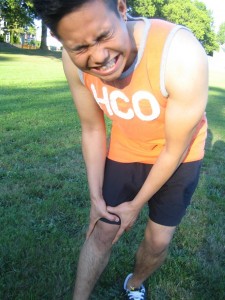The patella tendon is responsible for connecting the knee cap or patella to the tibia. It functions as a lever and a vital component in the movement of straightening the knee. Any injury to the patella tendon can range from a minor strain or a rupture, causing pain and dysfunction.
Injuries to the patella tendon
Common injuries to the patella tendon are caused by excessive strain or overuse of the knee. On the other hand, the patella tendon can become damaged due to injury, especially during falls. In such injuries, the quadriceps muscles which are responsible for the extension of the knee will tighten. Initially, the pain is insignificant but if not treated properly, the pain can become permanent due to the poor circulation accompanied with diminished tensile strength as the body starts to age.
Patella tendonitis
A tendon is the group of durable connective tissue that connects the bone to the muscles. With patella tendonitis, it involves the inflammation and irritation of the tendon right beneath the kneecap, due to the micro tears. It is also caused by overuse especially in activities that involve a lot of jumping or running.
Symptoms and treatment for patella tendonitis

The symptoms of patella tendonitis include the following:
- Pain that worsens with activity or if the knee is extended
- Tenderness over the tendon area
- Swelling
The treatment for patella tendonitis involves the application of ice, rest and administration of anti-inflammatory medications. The individual should steadily return to normal activities if possible. You can learn how to properly manage tendonitis by enrolling in a first aid course.
Rupture of the patella tendon
Once there is a tear present in the patella tendon, it is called a rupture. The kneecap will lose support from the shin bone which hinders the ability of the knee to straighten. As a result, it leads to complications when standing as the leg will often buckle due to the inability of the leg to straighten and support the weight of the body. In severe cases, the patella moves up into the thigh area.
Treatment for patella tendon rupture
The treatment for a ruptured patella tendon depends on the severity of the tear that was sustained. With a partial rupture, it usually responds to non-surgical treatment that includes rest and immobilization. For serious injuries that involve complete rupture, surgery is required. Braces or casts should be used for several weeks so that the tendon is given time to heal and then followed by weeks of physical rehabilitation.
Diagnosing a patella tendon injury
When creating a diagnosis of an injured patella tendon, it is usually apparent upon clinical assessment. An individual who has a tear in the tendon could not extend the knee against gravity and unable to perform a straight leg test. The doctor can usually feel the presence of a gap in the tendon, just beneath the kneecap.
In most cases, an X-ray will be requested by the doctor since a patellar fracture can also cause similar symptoms and must be excluded as a possible diagnosis. On the X-ray result, the patella is somewhat higher if compared to the opposite knee since the quadriceps pulls up the kneecap and there is nothing holding it down. Even though an MRI is not needed, it can be used to confirm a diagnosis as well as check the knee for other possible damages.
